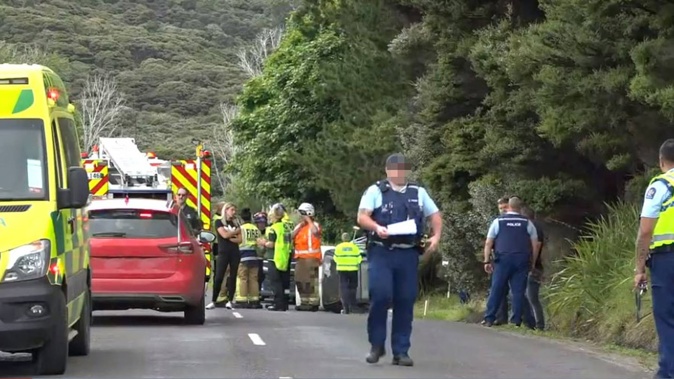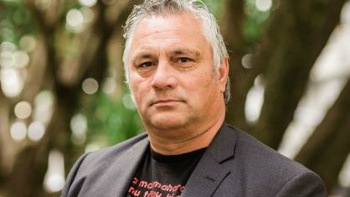

An envelope containing the coronial findings into the death of Alfred Bryers’ 3-month-old baby girl sits at his home.
It remains unopened. He can’t bring himself to read what’s inside.
“It’s just too heartbreaking,” he told NZME.
“The sun doesn’t shine as bright as it used to without her in the world.”
Crystal Mary Bryers was killed when the car she was travelling in, which was being driven by her mother who was under the influence of a class A drug, struck a culvert and rolled on its side in the Far North on December 2, 2020.
She was ejected from her rear-facing capsule and died at the scene.
But her death was avoidable.
An expert said if Crystal was properly restrained in the capsule and if it was correctly installed in the back passenger seat of the vehicle, she would have sustained minimal, if any, injuries in the crash.
Tragically, she had been placed on top of the capsule’s safety harness which was done up underneath her.
The capsule was also in the front passenger seat, surrounded by airbags. As a result of the crash, the airbags deployed. At a speed of about 300km/h and with a force of approximately 900kg, an airbag struck the front edge of the capsule.
Coroner Alison Mills described Crystal’s death as a tragic and poignant reminder of the importance of the correct use of car restraints.
But a staggering number of parents have not been properly taught how to use the safety equipment, she found. Now, she is calling for better education on the issue.
A mother’s life sentence
Crystal’s mother, Jacqueline Tapara, had been driving north on Kaitaia-Awaroa Rd towards Ahipara on the day of the crash.
Witnesses described seeing her car drive off the left side of the road and clip the ditch.
The vehicle continued along the ditch for around 35 metres before hitting a driveway and concrete culvert.
At that point, it rolled and came to rest on the driver’s side door.
Members of the public, including a nurse who was driving past, stopped to assist. Tapara was extremely distressed and initially trapped in the car.
Crystal was unable to be revived.
Tapara was transported to Whangārei Hospital where a blood sample was taken. It was found to contain methamphetamine.
In December 2021, she was convicted and sentenced in the district court for being in charge of a vehicle whilst under the influence of a controlled drug and causing the death of Crystal.
/cloudfront-ap-southeast-2.images.arcpublishing.com/nzme/PQH23FVJ6RGFDLQOJCR6L244LQ.jpg) Coroner Alison Mills held an inquiry into the death of the infant.
Coroner Alison Mills held an inquiry into the death of the infant.
According to Coroner Mills’ recent findings, the summary of facts in the prosecution of Tapara, who was driving on a learner’s licence at the time of the crash, said she had “most probably” consumed meth the day before the accident.
The Crown accepted that while she was impaired, it was at a low level.
Tapara, who was sentenced to nine months of home detention, told police she had been at a doctor’s appointment prior to the crash.
While there, Crystal had been asleep and Tapara said she did not put her car seat harness on when they left.
“I just forgot, I wasn’t thinking,” she said.
Tapara later told someone she had taken her eyes off the road because she was checking on Crystal, the findings stated.
The probe into Crystal’s death
Coroner Mills delayed opening an inquiry into Crystal’s death pending the outcome of the criminal investigation and prosecution.
Her findings were released in May. In her decision, she said Crystal was a much-loved daughter of the KohuKohu couple, Bryers and Tapara, and the younger sister of their two sons.
“Crystal’s family wanted to do the right thing by purchasing an age-appropriate car restraint for her,” Coroner Mills said.
“The failure to use it in the appropriate position of the car and properly restrain Crystal resulted in her subsequent death which has had a devastating impact on all her whānau.”
Bryers told the inquiry he had bought the capsule and that it came with a base which the seat clipped into.
He said it was easy to use and the base was usually in the back seat of Tapara’s car.
“Alfred said that they would usually buckle Crystal into the capsule using the shoulder straps before leaving the house. He stated on occasion he had reminded Jacqueline that she needed to put the capsule in the base properly and make sure Crystal was strapped in.”
But following the crash, the base was discovered in the boot of Tapara’s car. It had not been used.
The capsule had instead been held in place by the front seat passenger seatbelt. But Crystal had not been clipped into the seat’s harness.
There was a label sewn on the inside of her capsule, facing the driver. It warned against putting a rear-facing car seat on a front seat with an airbag. It said death or serious injury could occur.
/cloudfront-ap-southeast-2.images.arcpublishing.com/nzme/ZTCBAQFVDRA6VBXWPAYE5ODERI.JPG)
An investigation into the crash was undertaken by the serious crash unit (SCU). Its report concluded Tapara was possibly distracted by Crystal, was under the effect of drugs, fatigue or a combination of all three.
“This resulted in her driving into the shallow drain on the left of her lane. Speed was not considered a factor in the accident.”
Car seat education ‘hit and miss’
Forensic Crash Consultancy’s Bruce Wilson, an expert in crash investigation and road safety and a specialist in child restraint techniques, provided advice to the SCU and independently to Coroner Mills.
He said Crystal’s capsule was not set up for an infant as small as she was.
“The harness was in the second slot which was too high for her as it was above her shoulders,” the findings detailed.
“He also observed that while the car seat belt used for the installation appeared to have been routed through the car capsule correctly, the seat belt was not locked.”
Wilson emphasised the importance of correct installation and use of car seats and said around 85 per cent of child restraints used in New Zealand are installed incorrectly.
On the risks associated with airbags, he said they present a significant danger to a child in a rear-facing car seat and a lesser but still considerable danger to a forward-facing child.
There was a common misconception that airbags are like soft inflated balloons when, in reality, they deploy with significant force.
“Even if the capsule was correctly installed in the front seat and Crystal had been restrained properly, it was likely the force of the airbag deployment would have resulted in fatal injuries.”
But Wilson opined that had she been properly restrained in a car seat and in the back seat, she would probably have survived the crash with minimal injury.
He told the Coroner there was often confusion among parents around the use of car restraints and there was a need for effective education and support.
The topic was not always well covered, if at all, in antenatal classes, he said.
Plunket/Whānau Āwhina told the inquiry there was no specific guideline on what was included in antenatal education about child car restraints.
Consequently, there was a “general lack of consistency and very wide variation” in education provided on the topic, they said.
It was also acknowledged that not all parents attended antenatal classes and that not all antenatal education was provided under contracts with Te Whatu Ora.
The director of midwifery and service manager, maternity for Te Whatu Ora (Te Tai Tokerau), Sue Bree, told the Coroner education around car seats took place during the antenatal period as part of routine antenatal care.
She said it was also meant to be covered in predischarge education prior to families leaving a birth facility.
Wilson, however, said hospital staff and those providing antenatal care were often not properly trained in the proper use and installation of car seats.
“He commented that anecdotally it appears to be very ‘hit and miss’ what, if any, education parents get.”
The Coroner’s recommendations
In finding Crystal’s death was the result of head injuries sustained in the crash, Coroner Mills said the evidence before her suggested many children were not restrained appropriately despite the best intentions of parents.
“Getting it ‘right’ is not always straightforward.”
She recommended the Ministry of Health review its service specifications for pregnancy and parenting education courses with a view to providing greater guidance and requiring specific education, by trained car restraint technicians, on the correct use of child restraints, including placement in the car, setting up of the harness, and the risks associated with airbags and placement in the front seat.
The Ministry of Health was asked to comment on the proposed recommendation, but no response was received, the findings said.
Coroner Mills also “strongly” encouraged people who travel with children to ensure the child is properly restrained in an appropriate and safely installed car seat.
She emphasised the “real dangers” airbags pose to children.
The ‘heartbreaking’ consequences
Sadly, any changes made around education on the proper use of car restraints would come too late for Crystal’s whānau.
The Coroner’s findings are only 12 pages long. They were sent to Bryers and Tapara shortly after they were determined.
But Bryers told NZME he was yet to read the report.
Crystal is loved and missed dearly. Bryers said his whānau thinks of her every day.
“It’s hard. But we’ll get through.”
Tara Shaskey joined NZME in 2022 as a news director and Open Justice reporter. She has been a reporter since 2014 and previously worked at Stuff where she covered crime and justice, arts and entertainment, and Māori issues.

Take your Radio, Podcasts and Music with you









